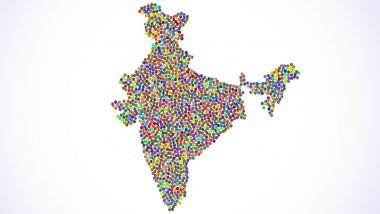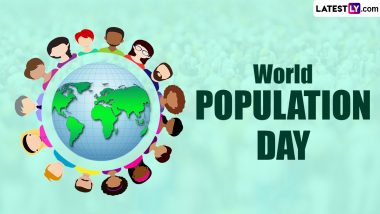World Population Day is observed every year on July 11, to raise awareness about global population issues. Established by the United Nations Development Programme (UNDP) in 1989, this day focuses on the challenges and opportunities associated with population growth. World Population Day was inspired by the “Day of Five Billion” on July 11, 1987, when the world's population reached approximately five billion. Recognising the importance of addressing population issues, the United Nations General Assembly in 1990 decided to establish World Population Day on July 11. Since then, the day has been a platform to promote awareness and action on various population-related concerns, including family planning, gender equality, and sustainable development. Commemorating World Population Day 2024, we’ll learn about the 10 most populated countries in the world and explore their demographic dynamics.
1. India
India is the most populous country globally, with a population of more than 1.44 billion. The country has surpassed China in 2022, ranking as the most populated one worldwide. India’s demographic landscape is defined by a median age of 28.2 years, indicating a young population as compared to other countries. The country's demographic trends depend upon rapid urbanisation, improvements in health care and socio-cultural norms encompassing family size and gender roles.
2. China
China is the second-most populated country in the world, with a population of around 1.43 billion. The country’s demographic landscape is characterised by a median age of 39.0, which indicates an ageing population compared to other nations. This trend is attributed to declining fertility rates, improvements in healthcare, and socio-economic developments impacting family structure and lifestyle.
3. United States
The United States, with a population of around 339 million, is the third most populous country. Known for its cultural diversity and economic influence, the U.S. faces issues related to immigration, healthcare, and social inequality. The population growth is driven by both natural increase and immigration. With a median of 38.1 years, the demographic landscape is evolving, slowly leaning towards the older population.
4. Indonesia
Indonesia, the largest archipelago, has a population of approximately 277 million. As the most populous country in Southeast Asia, Indonesia has a median age of 29.9 years, and its demographic landscape is notably young compared to other countries. However, the country faces challenges such as urban overcrowding, environmental degradation, and the inability to provide adequate infrastructure and services to its citizens.
5. Pakistan
With a population of around 240 million, Pakistan tops the list at number five. The country’s demographic landscape is characterised by a median age of 20.6 years and is relatively towards the youthful population. Rapid population growth, coupled with economic and political instability, presents significant challenges. Efforts are being made to improve healthcare, education, and economic opportunities to manage the growing population effectively.
6. Nigeria
Nigeria, the most populous country in Africa, has a population of about 223 million. With a median age of 17.0 years, the demographic landscape is relatively young compared to other countries worldwide. Nigeria’s population continues to grow owing to its high fertility rate. Besides, the country faces challenges in terms of poverty, education, and healthcare, but it also has immense potential for economic growth.
7. Brazil
Brazil’s population is approximately 216 million. The median age of the country is 32.04 years and its demographic landscape indicates an ageing population. As the largest country in South America, Brazil grapples with issues such as urbanisation, deforestation, and social inequality. Despite these challenges, Brazil remains a significant cultural and economic player on the global stage.
8. Bangladesh
Bangladesh is one of the most densely populated countries in the world, with a population of around 172 million. The country has made remarkable progress in areas like healthcare and education, yet it faces ongoing challenges related to urbanisation, climate change, and resource management. With a median age of 27.1 years, the demographic landscape is notably young.
9. Russia
Russia’s population is about 144 million. The country faces a declining population growth rate and an ageing demographic with a median age of 39.2 years. Economic disparities, healthcare challenges, and regional population distribution are vital issues that Russia must address to sustain its development.
10. Mexico
Mexico, with a population of roughly 128 million, is the tenth most populous country. Its young population and strategic economic position offer significant growth potential. The country has a median age of 30.2 years and has a young demographic landscape as compared to other countries. However, due to rapid urbanisation, Mexico deals with issues such as crime, healthcare, and economic inequality.
World Population Day reminds us of the importance of understanding and addressing the complexities of global population dynamics. The top 10 most populated countries each face unique challenges and opportunities shaped by their demographic trends. By focusing on sustainable development, healthcare, education, and economic growth, these nations can navigate the complexities of population growth and contribute to a balanced and prosperous global future.
(The above story first appeared on LatestLY on Jul 11, 2024 08:55 AM IST. For more news and updates on politics, world, sports, entertainment and lifestyle, log on to our website latestly.com).













 Quickly
Quickly





















